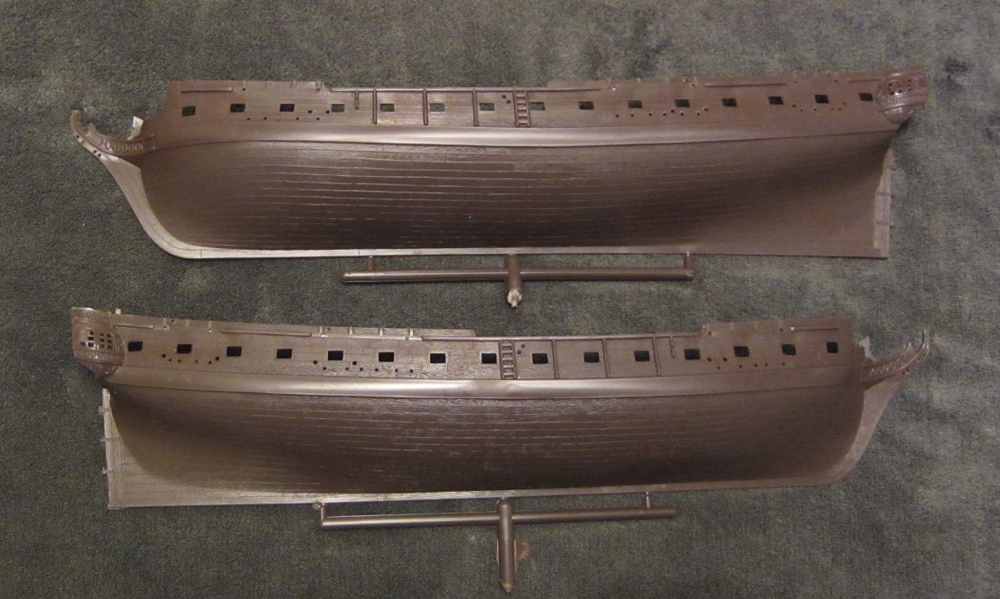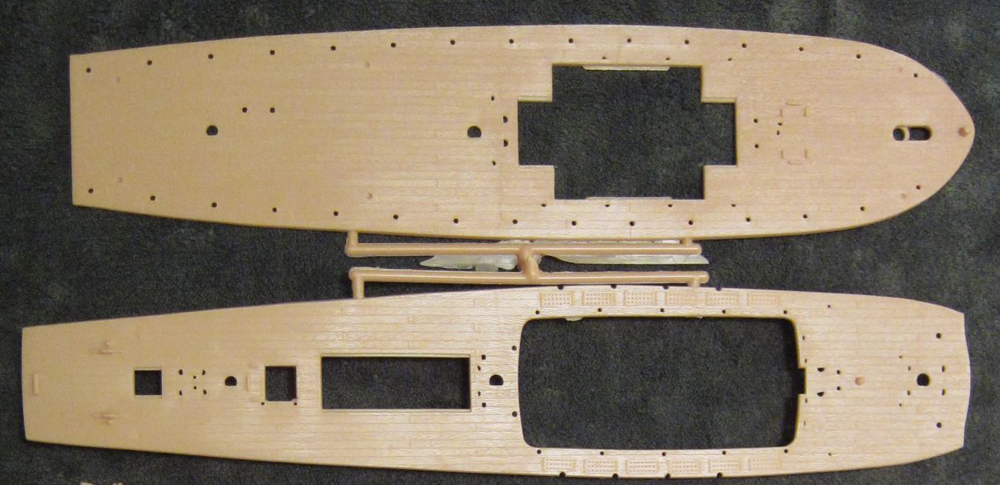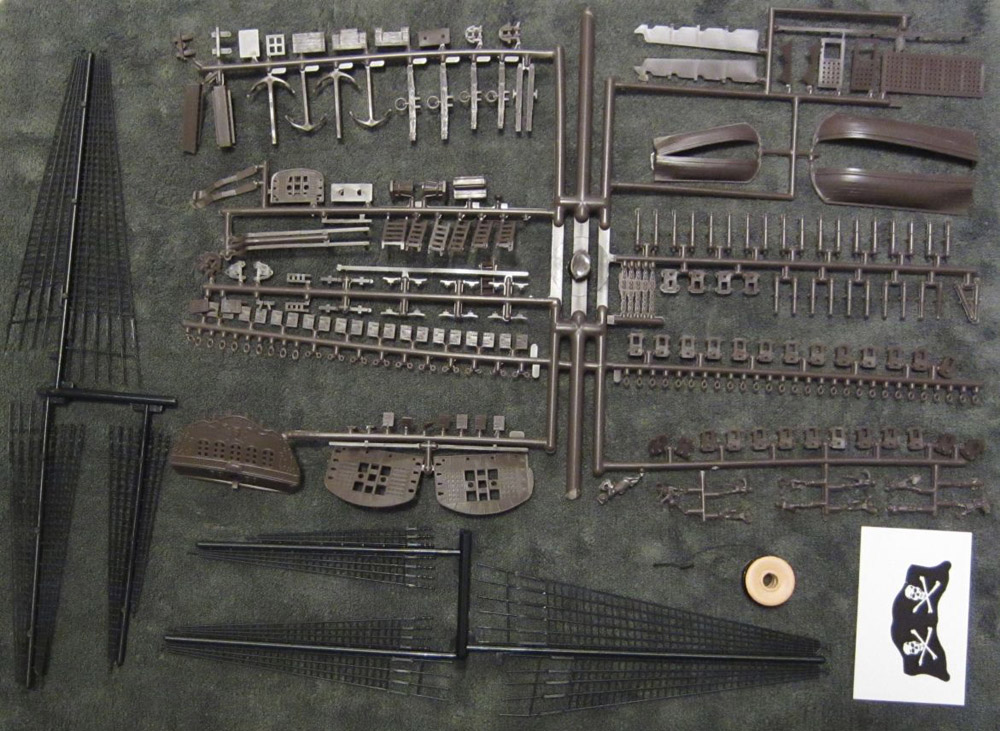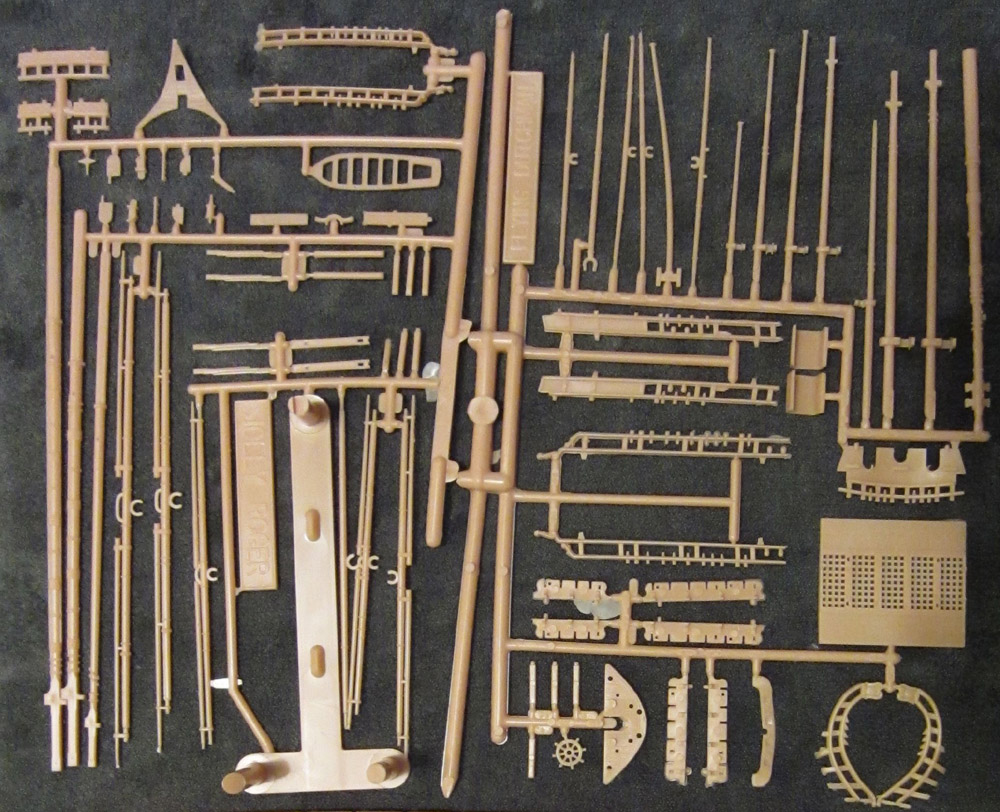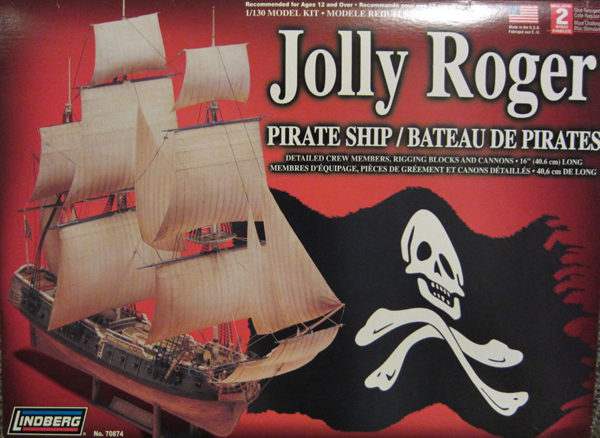
Lingberg's "Jolly Roger Pirate Ship"
By Lars Opland
Of all the plastic sailing ship kits I have built over the years, one of my favorites has always been one that was sold by Lindberg in the late 1960s as the French frigate "La Flore". The current issue of this kit is boxed as the "Jolly Roger Pirate Ship" but I deplore this silly marketing ruse and will not use that ridiculous name in referring to this kit again. The original potted history included with the 1968 issue of the kit stated that the La Flore participated in a French naval scientific expedition in 1771, but tracking down more particulars on the internet proved difficult due to my foggy forty-something memory of that account. Bill Morrison posted the text of the original kit history in a forum discussion of the kit, and from the names given there I was able to discover a French language web page regarding the commander of the expedition, Jean-René de Verdun de la Crenne, and an itinerary of the voyage around the North Atlantic from France to the Canaries, Spain, the Caribbean & Denmark. This French web site introduces possible further confusion by calling la Crenne's frigate the "Flora", which was actually the name of a British frigate scuttled during the American Revolution, raised by the Americans and later sold to France.
The general consensus of the participants in the above-mentioned forum (far as I read, anyway), seems to be that the exact design represented by the kit parts is based on a model in a French museum, but that the particular vessel represented by that museum model may never actually have been built and that the actual appearance of "the third La Flore", launched in 1768, may remain unknown.
The Kit
All that aside, Lindberg's frigate kit is one of the finest representations of the type in plastic. Parts are molded in brown and tan plastic, with a relatively complete set of vacu-formed sails (no studding sails), flexible black plastic shrouds and a spool of black thread. Planking detail is represented by raised lines and what some have described as heavy-handed woodgrain effect, but this will be mellowed some by a coat of paint and can be used to advantage with dry-brushing techniques later on. There is some flash, but not as much as you might expect from molds of this age, and mold parting lines are well aligned.
|
|
|
|
|
|
|
|
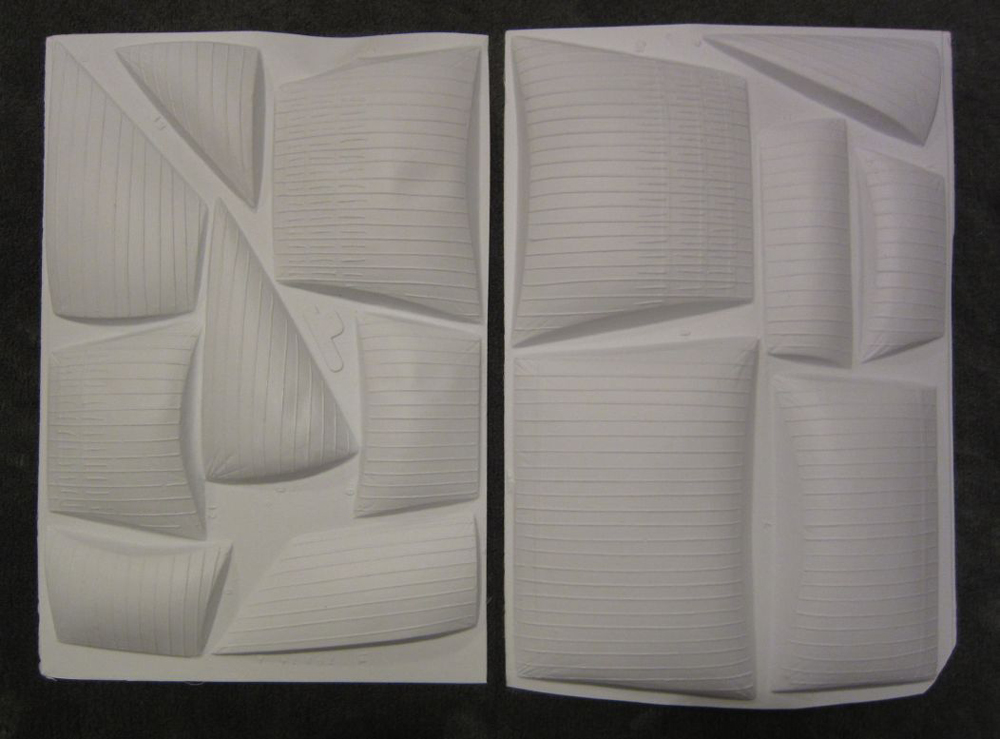
|
The keel is slightly warped on one side, but this doesn't present much of a problem. A stand and two different name plates are included, neither of them for La Flore.
A full gun deck is included, with two-part cannon assemblies. The kit is designed with six stanchions molded to the underside of the upper deck to allow joining the decks before enclosing them with the hull halves, while more stanchions and a galley enclosure are arranged around the large waist opening in the upper deck. My best recollection of building this kit when it was new is that some careful fitting was needed to bring all this together, along with the adjoining beakhead bulkhead, when assembling the hull, but the result is very "ship shape". There is no camber molded into the decks, and there is an oversized opening molded in the lower deck which incorporates the main hatch grating. I have no idea why the mold makers did the hatch that way; it almost appears to be an accommodation for replacing batteries but the kit has never been tooled for a motor installation...thank goodness.
Two well-shaped ship's boats nest together and are stowed over the main hatch, so the out-of-place deck seams are not prominent on the finished model even if the builder does little about them. A small companionway hatch structure on the quarterdeck has an awkward "operating" hinge feature that is best done away with; you wouldn't want to attempt fiddling with it on a fully-rigged model anyway! There are 12 crew figures, about a quarter of what would be wanted for the "watch on deck" in a frigate of this size and period. Remaining deck details, railings and such are workman-like and salty as can be; she looks every inch an 18th-Century man-o-war.
Masts and spars are in accordance with the rest of the kit, neatly molded and correct in appearance. The only warped spar in my copy was the flag staff for the stern. Platforms are pierced for those plastic ratlines, but this detracts little from the overall effect, especially with all that "canvas" set.
A suggestion for rigging a model of this sort with sails set: These plastic kits are usually molded with some feature to compel the builder to fix the yards 90º square to the centerline while the fore-and-aft staysails, jibs and spanker are always molded with "wind" filling them from one side or the other. Happily, Lindberg's French frigate has no such feature and I can tell you from experience that this configuration NEVER happens in full-size practice. If the square sails are braced square and filled with wind, the fore-and-aft sails hang limp, and turning the ship enough to fill those staysails while yards are squared will cause the square sails to spill and shake. It is just possible to make a square rig do this with sails all filled, but the result is embarrassingly slow sailing since none of the sails will be properly trimmed. The fore-and-aft sails in the kit are all molded on the port tack (wind blowing across the ship from the port or left side), so the yards on the model can be "braced around" (turned to the right so all square sails will "puff out"or fill to starboard) properly by simply gluing them at an angle to catch the same wind the staysails are filled with, and rigged all accordingly. Finished this way, any sailing ship model will look better on the shelf or mantle, too.
Conclusion:
Kudos to Lindberg for keeping this gem on the market...and a big raspberry to them for doing their part to "dumb down" the populace with their execrable practice of assigning phony ship names and fake "histories" to perfectly fine model kits. Get one of these kits, round up some good references and do it justice.
This kit also lends itself to conversion projects and several modelers appear to have gotten nice representations of H.M.S. Surprise out of it, judging by my Google image search results relating to this review...and my own plans for the kit...
Recommended References (in addition to those named above):
"The Way of the Ship" by Allan Villiers
"The Frigate Surprise" by Lavery & Hunt
"Sailing Ships" by Cedric Rogers
Many more come to mind; most I've bought from used book stores at very low prices. Anything with lots of contemporary paintings & illustrations can be a big help with detail, color & rigging.

